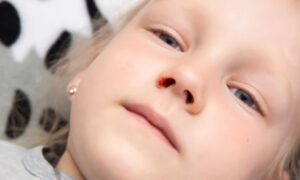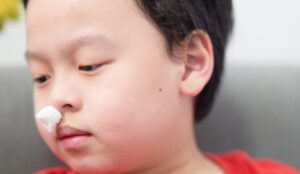Agoraphobia is a type of anxiety disorder characterized by intense fear of open spaces, crowded environments, or situations from which escape might be difficult. This condition often includes panic attacks, and in children, it can significantly impact daily life and social interactions. Early diagnosis and intervention are crucial. This article will explore how to diagnose agoraphobia in children, including the necessary steps and methods.
1. Initial Identification of Symptoms
Parents or teachers are usually the first to notice behavioral changes in children. If a child begins to show excessive fear toward certain places or situations and actively avoids them, it could be an early sign of agoraphobia. Common symptoms include:
- Intense panic reactions: When in open or crowded spaces, the child may show extreme anxiety or panic, such as rapid breathing, accelerated heartbeat, and sweating.
- Avoidance behaviors: The child may strongly resist going out, especially to crowded or open places like supermarkets, playgrounds, or movie theaters.
- Increased dependence: The child might insist on having a family member or someone they trust accompany them and will not go out without them.
- Emotional changes: Agoraphobia often comes with mood swings. The child may become anxious, irritable, or show noticeable distress when they have to face these situations.
2. The Need for Professional Evaluation
Once parents or teachers suspect that a child might have agoraphobia, seeking help from a mental health professional, such as a psychologist or psychiatrist, is essential. Professional diagnosis not only confirms the condition but also provides a foundation for further treatment and intervention.
Doctors typically use the following methods to evaluate the child:
3. Medical History and Symptom Evaluation
A thorough medical history assessment is the first step in the diagnosis process. The doctor will ask parents and the child detailed questions about their living environment, social interactions, anxiety symptoms, and specific situations in which fear occurs. This evaluation helps the doctor understand the severity of agoraphobia and how long the symptoms have persisted.
Additionally, the doctor may inquire about the child's emotional state and daily habits to rule out other potential conditions that could cause similar symptoms, such as depression or social anxiety disorder.
4. Use of Standardized Diagnostic Tools
Many mental health professionals use standardized diagnostic tools and scales to determine if a child meets the criteria for agoraphobia. Common tools include:
- Generalized Anxiety Disorder Scale (GAD-7): Used to assess the child's level of anxiety, helping the doctor determine if the anxiety is related to agoraphobia.
- Panic and Agoraphobia Scale: Specifically designed to evaluate the severity of panic attacks and agoraphobia.
These tools are typically administered through questionnaires and help quantify the child’s anxiety and fear levels, providing a basis for diagnosis.
5. DSM-5 Diagnostic Criteria
According to the Diagnostic and Statistical Manual of Mental Disorders (DSM-5), agoraphobia diagnosis requires meeting certain conditions. Doctors usually evaluate agoraphobia based on the five major diagnostic criteria outlined in the DSM-5, which include:
- Persistent fear or anxiety related to using public transportation, open spaces, enclosed spaces, being in crowds, or being outside the home alone.
- Avoidance behaviors, where the child will avoid these situations or only endure them with great distress, often requiring the presence of a familiar person.
- Symptoms must last for at least six months and cause significant interference in daily life【1】.
6. Exclusion of Other Conditions
During the diagnostic process, doctors also carefully rule out other possible psychological or physiological conditions that may cause similar symptoms, such as:
- Panic Disorder: While panic attacks are common in both agoraphobia and panic disorder, panic disorder typically involves sudden attacks unrelated to specific situations.
- Social Anxiety Disorder: Unlike agoraphobia, social anxiety disorder is mainly focused on fear in social situations rather than fear of open or enclosed spaces.
In some cases, doctors might also conduct physical examinations or laboratory tests to rule out physiological conditions like thyroid issues or heart disease that can trigger similar anxiety symptoms.
7. Treatment Recommendations After Diagnosis
Once the diagnosis is confirmed, the doctor will develop a treatment plan tailored to the child's specific needs. Treatment for agoraphobia often includes:
- Cognitive Behavioral Therapy (CBT): This helps the child identify and change negative thoughts related to their fears, gradually exposing them to feared situations to reduce anxiety.
- Exposure Therapy: The therapist might gradually expose the child to the feared situations, starting with less challenging scenarios and progressively moving to more difficult ones, reducing avoidance behaviors.
- Medication: For more severe cases, doctors may consider prescribing anti-anxiety medications to assist with therapy【2】.
8. Parental Support
Parental support is crucial throughout the diagnostic and treatment process. Parents should maintain a caring and understanding attitude toward their child's situation, encouraging participation in treatment. They can also learn coping strategies to help the child manage anxiety in daily life.
Conclusion
Agoraphobia has a significant impact on a child's life, and early diagnosis and treatment are key to helping them regain normalcy. Through professional diagnostic tools and methods, doctors can accurately assess the severity of a child's anxiety and provide personalized treatment plans.
References:
- American Psychiatric Association. (2022). Diagnostic and Statistical Manual of Mental Disorders, Fifth Edition (DSM-5).
- Mayo Clinic. (2023). Agoraphobia: Symptoms, Diagnosis, and Treatment.








